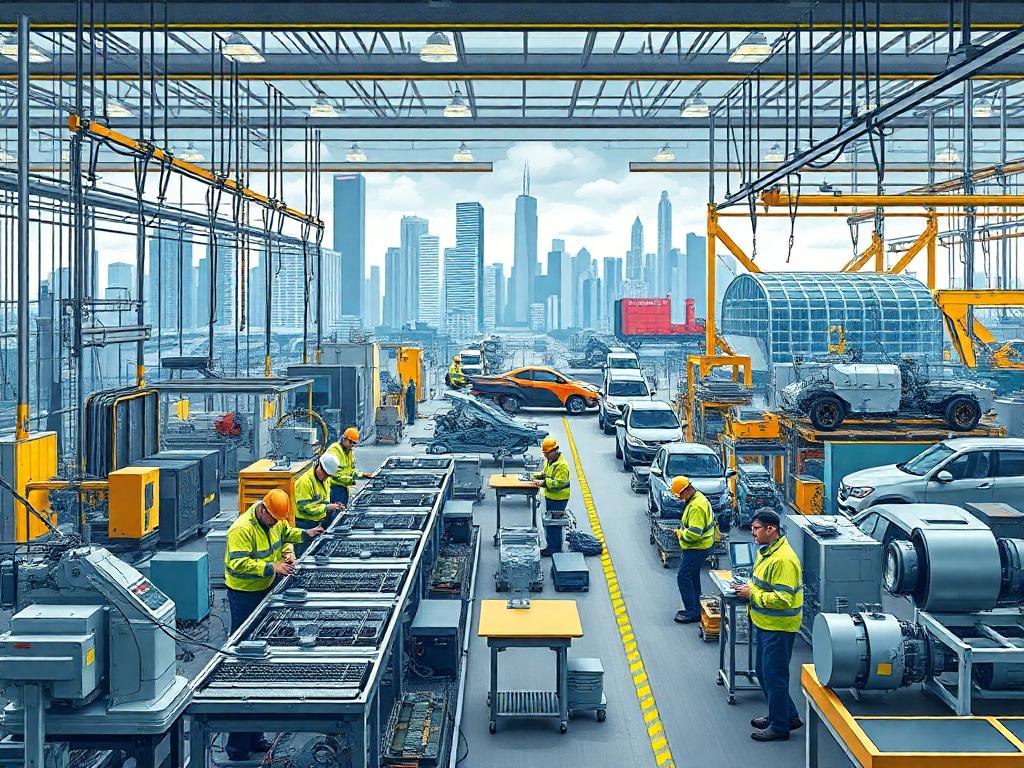The Manufacturing Industry of Michigan: A Cornerstone of Economic Growth

Michigan’s prosperous industrial heritage has always been a driving force in the United States manufacturing sector. From its historic role in the automotive industry to its diversified range of manufacturing operations today, Michigan’s manufacturing landscape is a testament to innovation, resilience, and economic transformation. This article explores the evolution of Michigan’s manufacturing industry, key sectors, and ongoing significance to the state and national economy.
The Birth of Michigan’s Manufacturing Legacy
Michigan’s manufacturing base had its roots in the early 19th century when the state became a center for different industries, particularly those concerned with natural resources. Its rich raw materials, such as timber, copper, and iron, made Michigan an ideal place for industrialization. However, what defined Michigan as a manufacturing powerhouse was the automobile industry, which rose in the early 20th century.
In 1903, Henry Ford started his Ford Motor Company in Detroit. Innovations in mass production techniques—specifically the now-famous assembly line—changed the course of the automotive world. They not only transformed the car industry but also helped establish Michigan’s long-term superiority in manufacturing.
The Automotive Industry: Michigan’s Manufacturing Heart
The automotive industry has been at the heart of Michigan’s manufacturing economy for over a century. Detroit, often termed the “Motor City,” became the global center of automobile production. The “Big Three” auto makers-General Motors, Ford, and Chrysler put their roots firmly into Michigan soil, which made up the economic identity of the state.
A sector under the automotive industry in Michigan is a broad spectrum from an assemblage of automobiles up to parts production and technological advancement. It hosts many suppliers of major automotive components like engines, transmission, and electronics in its state. Therefore, it is the nucleus of the global supply chain of the automotive world. With the advent of electric vehicles, Michigan’s manufacturing sector is again evolving. Companies are investing in electric vehicle production, batteries, and autonomous driving technologies, thereby maintaining their leadership in the automotive industry.
Diversification of Manufacturing Sectors
Although the automotive industry remains the centerpiece, Michigan’s manufacturing base has expanded and diversified recently. Other sectors include aerospace, medical devices, chemicals, and machinery, which have helped Michigan withstand economic downturns and remain one of the country’s most versatile manufacturing hubs.
For example, aerospace manufacturing has increased in Michigan, with companies like Lockheed Martin, Boeing, and General Electric. Michigan’s talented workforce and access to innovative technologies make it an attractive site for aerospace manufacturing, including parts manufacturing, engines, and defense systems.
In addition, the medical device manufacturing industry has grown and thrived in Michigan. Companies manufacture diagnostic equipment, surgical instruments, and implants. The state’s emphasis on research and development and its robust manufacturing base have led to its position as a leader in advanced medical technologies.
The Role of Technology in Michigan’s Manufacturing Renaissance
Michigan has recently embraced advanced manufacturing technologies to maintain its competitive edge. Automation, robotics, 3D printing, and additive manufacturing have become integral parts of the state’s industrial landscape. These technologies are helping manufacturers improve production efficiency, reduce costs, and enhance product quality.
One area witnessing significant growth in the State of Michigan is Industry 4.0, which integrates intelligent technologies, data analytics, and IoT (Internet of Things) in manufacturing processes. A few Michigan manufacturers use smart sensors, real-time data analysis, and artificial intelligence-driven systems to design efficient production lines and facilitate predictive machinery maintenance for increased productivity. This migration to more complex and data-intensive manufacturing processes ensures Michigan’s position as an early adopter of a new generation of industrial output.
The Workforce and Education: A Key to Michigan’s Manufacturing Strength
Michigan’s success in the manufacturing sector is mainly due to its highly skilled workforce. The state has a strong tradition of blue-collar labor, especially in areas such as automotive production, machining, and assembly. Of course, in recent years, there has been a greater demand for highly skilled workers in advanced manufacturing technologies, which has led to considerable investments in education and workforce development.
Michigan has a system of community colleges, technical schools, and universities that specialize in offering education and training in manufacturing disciplines. At Michigan State University, the University of Michigan, and Western Michigan University, collaboration between business and higher institutions is practiced so that the graduate output meets the emerging needs of the manufacturing industry.
Apprenticeship programs, on-the-job training, and collaborations between industry leaders and educational institutions have also significantly ensured a steady talent pipeline for Michigan’s manufacturing jobs. These initiatives aim to equip the next generation of workers with the skills necessary to thrive in the high-tech manufacturing environments of the future.
Challenges and Future Outlook
Despite its success, Michigan’s manufacturing industry faces numerous challenges. Global change disruptions, shifts in client calls, and transitioning to greener technology have all impacted the nation. Some areas of the country are also experiencing a decline in traditional manufacturing jobs as companies automate and offshore paints.
However, Michigan responds with emerging industries and technologies against challenges. Investments in clean energy, electric vehicle manufacturing, and advanced materials development should catalyze future growth. Michigan’s efforts toward continued upskilling and stimulation of innovation in manufacturing will provide a continuing competitive advantage in this transformed global economy.
Conclusion
From the humble beginning of the 19th century, Michigan’s manufacturing zone has advanced into the powerhouse enterprise it is today. Technological advancement, rich commercial history, and adaptability symbolize the country’s production region, with automobiles in its middle. Still, an enormous part of the producing region makes Michigan triumphant in the international economy. Now that the nation has followed new technologies and improvements, Michigan’s manufacturing industry can be geared toward a shiny and sustainable future.
For further details, visit https://www.britannica.com/place/Michigan/Manufacturing